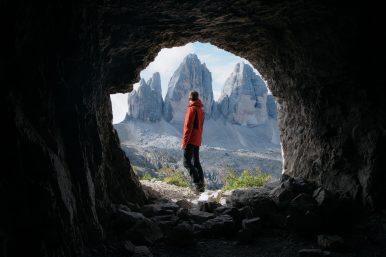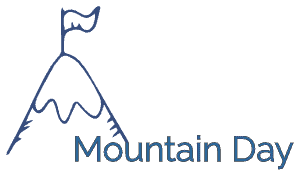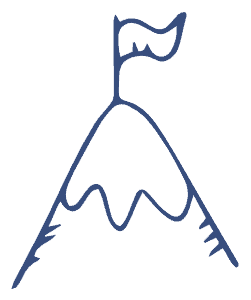Hiking in the High Mountains: How to Prepare
During our vacations, we often allow ourselves to be tempted by a long hike in the high mountains, which sometimes requires an overnight stay of several nights. These special but unforgettable adventures require a minimum of planning.
Prevention, not cure
When the route takes several days, and especially in the highlands, precautions are increased tenfold for the duration of the hike. Topo-guide ® and map in hand, each stage must be visualized in advance, the walking time calculated, the differences in altitude analyzed and the stopping points determined: shelters, unguarded huts or possible bivouac sites near a body of water.
Planning relatively short stages allows you not to accumulate too much fatigue and have the opportunity to prepare for unforeseen events: find a way, take shelter from a downpour, keep up with a group member who has gotten into a difficult situation. By leaving early, the tourist will also avoid the inconvenience associated with arriving at camp at night.
Before leaving, remember to give a detailed account of your route to someone who can pass this information on in case of problems.
Review your gear
Before any high mountain hike, you should use your gear several times to know if it is suitable for the conditions of the upcoming hike: shoes, backpack, raincoat, etc. In addition, it is highly recommended to test and understand the order of assembling and disassembling your tent. It is also wise to separate your things inside the backpack using plastic pockets to better organize and protect your carrier.
A healthy body for a healthy mind
In the weeks leading up to the hike, it is recommended to walk for 3-4 hours several times a week with a loaded backpack. To get used to mountain trails, you will have to give preference to steep routes, especially to accustom your muscles to walking up and down the slope. Every extra kilo is an additional effort, so observing the rules of food hygiene is also important long before departure. Give preference to flour products and cereals with a low glycemic index (pasta, rice, potatoes, etc.). For a hiking diet, plan a diet of 3,000 to 3,300 kcal per day to cover energy needs, and above all, do not forget to drink water, perhaps with a pinch of salt and slightly sweetened. In the mountains, drier air contributes to dehydration. Finally, limit meat to avoid cramps.
Walking above 3,500 m.
Hiking in high mountains requires work on endurance, muscle training and, of course, acclimatization to the altitude. Note that the walking pace here should be different, slower and more regular, so that the body can withstand much more intense efforts than at sea level. If the altitude and the number of days of walking affect the physical, then the mental too. be tested for both biological and contextual reasons (distance, sense of isolation, difficulties in adapting to the environment). It is therefore advisable to prepare by taking short hikes to altitude.
The art of bivouac during a hike
To ensure that bivouac during a hike does not turn into a real hassle, it is necessary to prepare well and know the basics of the ideal little nomad.
Air conditioning
If spending the night in a tent or even under the stars does not seem very dangerous, then the impression of being outside and therefore “unprotected” is a much more important element than it seems. Therefore, a well-prepared camping bivouac is a guarantee of peace. Then the hiker will learn how to fit a large stone into the back of a very comfortable seat to witness the spectacle of the sky, while evoking memories of the best moments of the day, before falling asleep in unison with nature and your tired body.
Bivouac is not allowed

In wild camping, tourists travel in motorized vehicles and look for tent sites in the wild, usually close to easily accessible routes. Wild camping involves staying in the same place for several days.
Bivouac is a practice mainly used by outdoor sports enthusiasts who want to sleep and have no choice but to camp in the wild, either as a precaution (an improvised bivouac in case of emergency) or by choice (away from any shelter or other place). Bivouac can be done under the stars or simply in a light tent in the wild. The goal is to sleep for one night before leaving without leaving a trace of your journey.
Camping is prohibited on beaches, along roads, in certain places (check with the town hall).
It is regulated in national parks, regional nature parks and reserves (check with the protected natural areas on a case-by-case basis).
Bivouac is usually allowed subject to the consent of the landowner. But it may also be subject to special rules depending on the location (protected natural areas, etc.).
If it is not possible to obtain the owner’s consent, but also on a more general basis, it is necessary to follow a few rules:
It is important to respect the space in which we are.
It is important to spread out as little as possible, to reduce the area of the installation as much as possible and to organize a bivouac. Use light tents of small area.
Before going to bed, do not leave anything lying around outside the shelters.
It is recommended to arrive late and leave early.
You should avoid being intrusive and stay in the same place for only one night.
Permission must be requested from farmers/potential owners of private land on which the bivouac will be organized (if possible).
It is necessary to choose your location carefully and conscientiously.
When leaving, it is necessary to erase all traces of passage and leave the place as clean as possible.
The four cardinal elements
- Soil: choose soft soil with a gentle slope or no slope at all, so as not to roll or tilt too much. Remove rocks and branches, smooth out clods and other hard spots that your back will not like. In a tent, do not forget to dig channels around the flysheet and let the dew dry before folding it.
- Air: find real sheltered places, even if they offer a less beautiful panorama. A large rock or a large grove will be a pleasant ally in case of prolonged wind or gusts. On the seashore, where thermal winds can be very strong, pitch your bivouac on the edges of dunes or sheltered bays.
- Water: Beware of standing water. With the first heat, it is often associated with insects and mosquitoes. Likewise, bivouac during a hike on the edge of a stream can pose a significant risk in the event of storms or flash floods. Therefore, it is advisable to place overnight stays outside the beds of large rivers, at a decent distance, outside flood zones (lakes, ponds, rivers, etc.).
- Fire: In summer, in most regions of France, lighting a fire is prohibited. To heat food, move the fireplace away from the tent and other bivouac equipment, provide enough water so that it can be turned off at any time, and set a distance from any dry vegetation. We must always remain vigilant.




